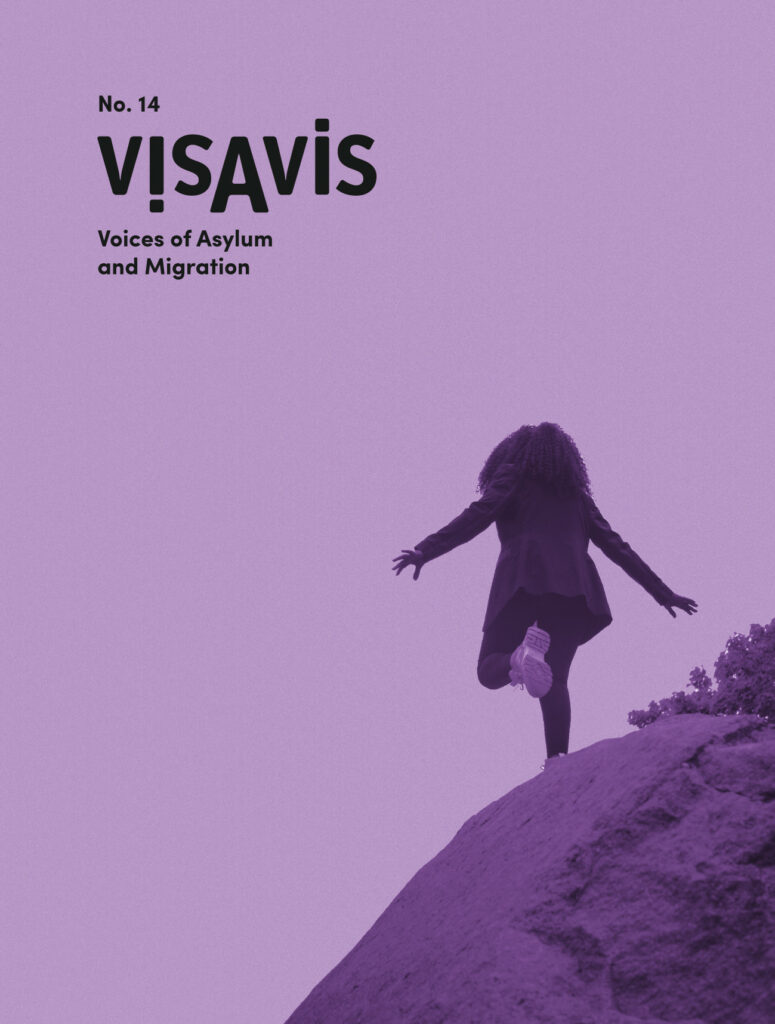It is becoming increasingly dangerous and difficult to reach Europe in search of protection. This development is a consequence of the aggressive migration policies established by the EU and its member states. The externalization of EU borders has recently intensified through vigorous appropriation of the monitoring system and custody in neighboring countries like Libya and Turkey, aid funds to countries that comply with these monitoring rules, and informal agreements that assign militias the task of border control on the Mediterranean. Occasionally, we catch a glimpse of the price paid; slave auctions, mass drownings, torture, child labor – even people locked in cages on European soil.
by InEUmanity Malmö • 2018

In addition to this externalizing process, there are ongoing negotiations within the EU about a new common asylum system. Accordingly, those who manage to enter Europe are going to find it significantly harder to stay. In 2016, the reform of the Common European Asylum System (CEAS) was presented by the European Commission, which includes a package of seven draft laws that aim to “update” the asylum system. The consequences will be a severe deterioration of asylum rights and a more repressive attitude towards asylum seekers and migrants.
The biggest cornerstone in CEAS would remain the Dublin Regulation, the legislation that determines which member state is responsible for an asylum seeker. According to Dublin, an asylum seeker should seek asylum in the first EU country they enter (the so-called “first land principle”). The reform proposal will strengthen this principle, and not allow any exceptions. This will be contingent on checking each asylum seeker’s case against a list of what the EU considers to be “safe countries,” with a further amendment threatening case dismissal if individuals seek asylum in another EU country (a so-called “secondary movement”).
Eurodac is Dublin’s database, where fingerprints from all asylum seekers in the EU are registered so that member states are able to see which country an asylum seeker entered first. In the new proposal, usage of the database is extended to cover the control of so-called irregular migration, and to make deportations more effective. Amongst other things, this allows state members to share information from the database with third countries (countries outside the EU) if that facilitates a deportation. It also proposes a reduced age for fingerprinting (from 14 to 6 years), and that the data be kept indefinitely.
The Qualification Regulation defines on what basis a person can get protection in the EU. The EU countries already have a common directive on qualification (for protection), but now the provision is extended, and is becoming increasingly regulatory in its influence, eventually overruling national legislation. The proposal stipulates that only temporary residence permits can be issued, and thereafter extended in stages. Moreover, even already-granted residence permits can be withdrawn if the need for protection is re-evaluated. This can happen, for example, when the situation in the country of origin changes. Country information will be updated continuously, and the system will have built-in “triggers” that make these changes noticeable, with possible withdrawal of residence permits as a result.
The Asylum Procedure Regulation would determine how the asylum procedure operates. This is also an already existing legislation that is now being updated from a directive to a regulation. Through a new regulation, the asylum procedure will be synchronized on an EU level along with the introduction of an “accelerated border procedure,” meaning one must apply for asylum within 10 working days of entering the EU, with 10 working days to appeal against the decision. During this decision process, the asylum seeker may be kept in custody.
The procedure involves verifying whether the asylum seeker has the right to seek asylum, whether they come from a country that the EU has defined as “safe”, and whether they have passed through another “safe” country on the way where they could have sought asylum. It is then decided whether or not the person has the right to seek asylum in the country they named in their application, and only after that does the investigation into the asylum claim start. If there is an indication that the country where the person comes from might be safe in the near future, the asylum procedure is frozen in anticipation of changes. If an asylum seeker is not considered to be cooperating or following the rules (for example, if they do not give their fingerprints, or if they move further into another country on their own) this can cause the asylum procedure to be closed and the person deported.
The Reception Directive would regulate the reception conditions for asylum seekers. The main goal of this directive is to stop so-called “secondary movement”. If an asylum seeker moves to another EU country than the first one they entered, they would be punished by the withdrawal of all potential support, such as financial aid, during the asylum procedure. Moreover, it will be easier to detain asylum seekers throughout the entire asylum process.
A further proposal among the seven draft laws concerns the opening up of legal pathways to Europe. The Resettlement Regulation aims to start up a European quota refugee system. The current quota refugee system within the EU is conducted on a national basis, and is a collaborative work between different countries and the UN’s refugee body, UNHCR.
Quota refugees are the world’s most vulnerable, and in order to be designated as a quota refugee, there should not be any other alternatives than to be resettled in another country. Instead of building on the work of UNHCR, the EU will use resettlement as a political tool the same way it did with Turkey, with quota places dependent on deportation agreements with third countries. An impending risk with this is that the EU can choose quota refugees from countries that sign readmission agreements or other informal agreements that aim to stop migration, instead of choosing refugee countries with the biggest need – bargaining, in other words. We can already see that countries like Libya are favored over countries like Uganda, despite the huge need for resettlement in the latter. Those who attempt to enter the EU by irregular means will also be excluded from quota refugee status, even in cases where there is no other means for them to flee. It is also proposed that the funding for national quota refugees be abolished, and for member states that resettle under the EU program to receive financial support for this. Moreover, resettlement and the qualification regulation will be combined, which means that even quota refugees will only be granted temporary residence permits.
Under the proposal, a new European Union Agency for Asylum (EUAA) would replace the existing European Asylum Support Office (EASO). The thought is that EUAA should implement the common asylum system, which includes the monitoring of member states during the process. EUAA will also receive a mandate to work on EU migration policy interests in third countries. Such a role was already explored by EASO when it played an important part in implementing the EU-Turkey agreement, whereby the EU bribed Turkey to stop all migration from Turkey to Greece.
The above are merely extracts from the content of each proposal, but are enough to give an image of what is happening. CEAS, in combination with the ongoing externalization of EU’s borders, in practice destroys the right to seek asylum in the EU. All leading NGOs working on asylum issues and asylum rights within the EU and its border areas are warning against this development and its consequences, as well as the UN, its International Organization for Migration (IOM), the Bar Association, data protection organizations, and others. In Sweden, InEUmanity in association with others such as the National Council of Refugees (FARR) and the CONCORD platform work to spread information and create resistance against CEAS negotiations, and the ongoing externalization of EU borders.
The migration issue within the EU has fallen into the “TINA” discourse: There Is No Alternative. In the same way that aggressive neoliberalism has become the only economic alternative for all governments, regardless of their political orientation, reinforced borders and deportations have become the migration-politics priorities for every member state in the EU. Regardless of the political standpoint of the government, appearing tough on the topic of “migration management” appears to be a must.
But we are many who do not agree with these political views. Migration and free movement cannot be something that only those who hold Western passports enjoy. We want to break the racist discourse that poses migration as a threat, because only then can we stop the deadly politics of exclusion.
Some are doing this through education and action. Others are doing it by saving lives on the Mediterranean. We may not be able to stop the EU, but we can build an alternative. We can create safe havens. We can protest. We can break the racist depiction of migration as a threat. We can begin to speak with each other and with others about what stands in the way of a free and just society. We can do a lot, but first of all, we have to organize ourselves.
